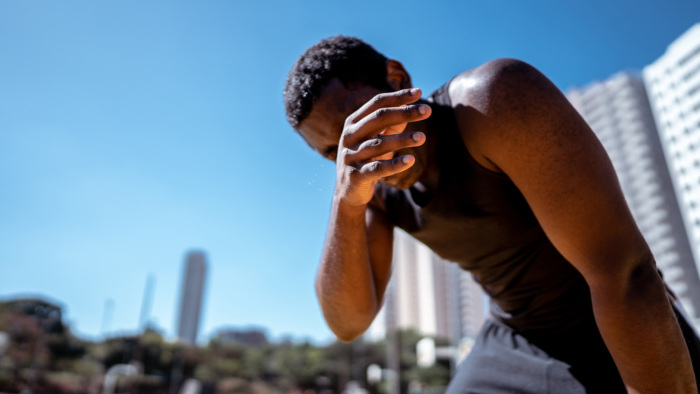
Heat Stroke and Sun Stroke: What They Are and How to Stay Safe
As the temperature rises during the summer months or just doing a heavy physical exertion at lower temperatures, heat-related illnesses become a real concern. One of the most serious conditions caused by prolonged exposure to high temperatures is heat stroke, also commonly referred to as sun stroke. But what exactly are heat stroke and sun stroke, and how can you recognize and prevent them? In this article, we’ll break down everything you need to know about these conditions in simple terms.
What Is Heat Stroke or Sun Stroke?
Heat stroke, sometimes called sun stroke, is a severe medical emergency that happens when your body’s temperature regulation system fails. Normally, your body cools itself by sweating, but when you’re exposed to extreme heat for too long, or exert yourself in hot conditions, your body can’t cool down effectively. This causes your core temperature to rise dangerously high - typically above 40°C (104°F) - which can damage your organs and even become life-threatening.
While sun stroke often implies heat illness caused specifically by direct sun exposure, the terms heat stroke and sun stroke are used interchangeably in many cases. Both describe a critical condition where your body overheats to dangerous levels.
What Causes Heat Stroke or Sun Stroke?
The primary cause of both heat stroke and sun stroke is prolonged exposure to high temperatures, especially when combined with dehydration. Factors that increase your risk include:
- Spending long periods outdoors in direct sunlight without shade
- Strenuous physical activity (in hot weather, but also possible at normal lower temperatures)
- Wearing heavy or dark clothing that traps heat
- Not drinking enough water
- Certain medications or medical conditions that affect your body’s ability to regulate heat
Anyone can develop heat stroke or sun stroke, but older adults, young children, athletes, and people with chronic illnesses are especially vulnerable.
Recognizing the Symptoms of Heat Stroke and Sun Stroke
Recognizing these conditions early can save lives. Some common symptoms include:
- High body temperature (above 40°C or 104°F)
- Hot, red, and dry skin (lack of sweating)
- Rapid heartbeat and breathing
- Headache, dizziness, or confusion
- Nausea or vomiting
- Muscle weakness or cramps
- Loss of consciousness or seizures in severe cases
If you or someone around you shows these symptoms, it’s crucial to act quickly.
What to Do If Someone Has Heat Stroke or Sun Stroke
Heat stroke and sun stroke require immediate medical attention. Call emergency services right away if you suspect either condition. While waiting for help:
- Move the person to a cooler, shaded area
- Remove excess clothing to help cool down the body
- Use cool water or wet cloths on the skin or spray water to aid evaporation
- Fan the person to increase cooling
- Offer water only if the person is conscious and able to swallow
Do not give aspirin or other medications to reduce fever, and avoid giving fluids if the person is unconscious.
How to Prevent Heat Stroke and Sun Stroke
Prevention is key to avoiding these dangerous conditions. Here are some simple tips to keep yourself safe during hot weather:
- Stay hydrated by drinking plenty of water throughout the day
- Avoid strenuous activities during peak heat hours (usually between 11 a.m. and 4 p.m.)
- Wear lightweight, loose-fitting, and light-colored clothing
- Use cooling products like cooling vests, cooling shirts, cooling headgear or cooling towels
- Take frequent breaks in the shade or air conditioning
- Use sunscreen to prevent sunburn, which can reduce your body’s ability to cool itself
- Be especially cautious if you are elderly, have chronic health conditions, or are caring for young children
Final Thoughts
Both heat stroke and sun stroke are serious conditions that shouldn’t be taken lightly. Knowing what they are, recognizing the warning signs, and acting quickly can make all the difference in preventing severe health consequences. By staying aware and prepared, you can enjoy the sunshine safely and keep heat stroke and sun stroke at bay.